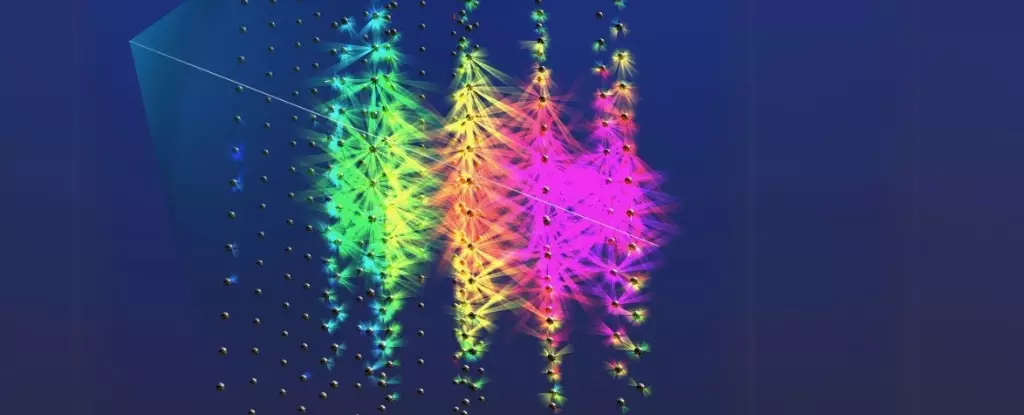The universe is a dynamic realm, brimming with high-energy particles that ceaselessly bombard Earth. Among these elusive subatomic entities, neutrinos stand out due to their negligible mass and electric neutrality. On February 13, 2023, scientists made a groundbreaking discovery when an undersea detector off Sicily recorded a neutrino with an astonishing energy level, measuring a remarkable 220 petaelectronvolts (PeV). To put this into perspective, the previously recognized record was just 10 PeV. This monumental finding has significant implications for our understanding of cosmic phenomena and the processes driving the generation of such high-energy particles.
Detecting neutrinos can be likened to seeking a needle in a cosmic haystack. These particles pass through ordinary matter unimpeded due to their weak interactions with everyday materials, making them incredibly difficult to observe. Specialized facilities like the Cubic Kilometer Neutrino Telescope (KM3NeT) have been established to track these elusive particles. Situated 3,450 meters beneath the Mediterranean Sea, KM3NeT employs 378 detection modules filled with light-sensitive sensors. When a neutrino interacts with matter, it creates a cascade of secondary particles, including muons, which then produce detectable flashes of light. During the groundbreaking event in February 2023, over 28,000 photons were recorded, indicating a massive underlying interaction.
Among the particles resulting from the high-energy neutrino’s passage, a highly energetic muon emerged with an estimated energy of around 120 PeV. While this figure is impressive on its own, it pales in comparison to the energy level of its progenitor neutrino. This significant energy difference raises pertinent questions about the origins of such a powerful neutrino and the astrophysical phenomena that could have produced it.
The search for the source of the record-breaking neutrino is a complex task complicated by the particle’s ability to traverse vast distances without disruption. The research team explored four potential origins for this exceptionally energetic neutrino: an astronomical object located within our galaxy, a source just outside of it, a transient event such as a gamma-ray burst, or a much more distant cosmic entity. Interestingly, the analysis of the positional data ruled out the first three possibilities, suggesting that the neutrino likely originated from extragalactic sources.
Given the energy level involved, scientists have postulated that the detection’s origin must be tied to a particularly dynamic object, such as a blazar, which is a type of active supermassive black hole that emits jets of high-energy particles directed at Earth. Following this hypothesis, the team scrutinized the cosmic region from which the neutrino originated, identifying twelve potential blazars that could serve as responsible parties.
Despite identifying several blazars in the vicinity, the evidence remains inconclusive, as detailed in the team’s findings. None of the observed associations can definitively be labeled as the source of the neutrino, which leaves the quest tantalizingly ongoing. The vast number of blazars in the observable universe complicates drawing firm connections; for many of these celestial phenomena, further research will be necessary to ascertain their roles in producing high-energy neutrinos.
In addition to the active galactic nucleus hypothesis, scientists also considered cosmogenic neutrino production, a process where cosmic rays collide with ambient photons—such as those originating from the cosmic microwave background (CMB)—to generate high-energy neutrinos. Should this theory hold true, the detection would mark the first observed instance of neutrinos formed through these mechanisms, offering deep insights into cosmic history.
The detection of this unprecedented neutrino signifies a monumental step forward in high-energy astrophysics, revealing not only the mechanisms behind particle acceleration in the universe but also showcasing the advanced capabilities of detection technology employed by researchers. The implications are far-reaching, with potential impacts on our understanding of the universe’s most extreme environments. As scientists plunge deeper into the enigma surrounding the source of this record-breaking neutrino, we stand on the precipice of new revelations that could reshape our comprehension of cosmic phenomena and the fundamental workings of the universe.
The remarkable neutrino detected in early 2023 serves as a reminder of our universe’s complexity and the ongoing importance of scientific inquiry. As we strive to unveil the origins of cosmic phenomena, each discovery leads us closer to understanding the intricate tapestry of existence woven throughout the cosmos.


Leave a Reply